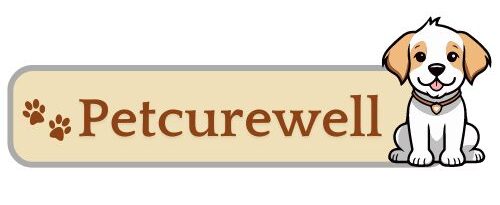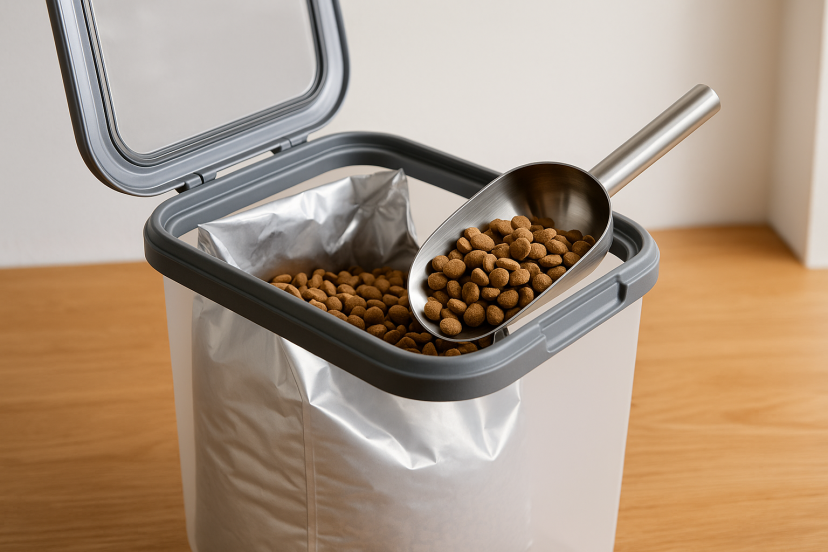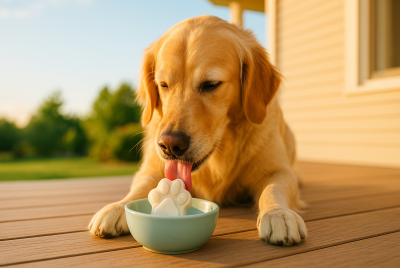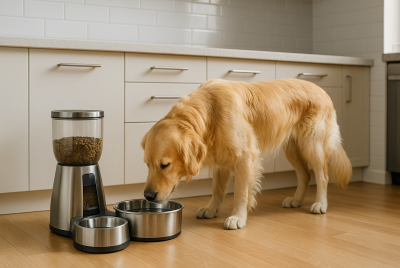Everything You Should Know About Dog Food Storage
We may earn a commission for purchases made using our links. Please see our disclosure for more details.
You work hard to choose the right food for your pup—so let’s make sure it stays fresh, safe, and tasty from the first scoop to the last. In this friendly guide, we’ll break down dog food storage step by step: what really affects freshness, how to store kibble, cans, raw, and freeze-dried, which airtight containers are worth it, and the research behind the best practices. You’ll walk away with a simple routine you can actually keep.
Affiliate note: If you buy through Amazon links below, I may earn from qualifying purchases at no extra cost to you.
Why dog food storage matters
Fresh food = better smell, better taste, and better nutrition. When kibble or wet food sits in heat, air, or sunlight, fats can oxidize (go rancid), vitamins can degrade, and moisture can invite mold. That can lead to tummy upset or your dog refusing the bowl. Let’s avoid that with smart habits.
The enemies of freshness: air, heat, light, moisture
Think of these as the “AHLM” rule. Air and light speed up fat oxidation; heat accelerates everything; moisture invites microbes and mycotoxins. Keep food cool, dark, dry, and airtight to protect aroma and nutrients (more on the science in a bit).
Dog food storage 101: Original bag vs. decanting
Here’s the gold standard: keep kibble in its original bag, tucked inside an airtight bin. Why? The bag’s liner helps protect fats, and the package carries the lot number and “best by” date you’ll need in case of recalls. The U.S. FDA recommends exactly that approach.
Quick tip
If you must pour kibble into a container, tape the bag’s label and lot number to the outside and always wash and fully dry the bin between bags to avoid rancid residue. Recent consumer guidance echoes these points and adds that storage below 80°F helps preserve quality.
Ideal temperature & location for dog food storage
Choose a cool (ideally under ~80°F/27°C), dry, shaded spot—not the garage, porch, laundry room near the dryer, or under the sink. Heat and humidity are freshness killers. Guidance from packaging and food-safety experts is consistent on keeping pet food cool and dry.
How long can kibble remain fresh once unsealed?
Most manufacturers recommend using opened kibble within 4–6 weeks and sealing between uses. As storage temperature rises, oxidation and quality loss speed up—research on dry pet food shows higher temps promote rancidity over time.
Storing canned & wet food the right way
- Unopened cans/pouches: room temp, dry, away from sunlight and heat.
- Opened cans: cover with a silicone can lid, refrigerate, and use within 3–5 days.
- In the bowl: follow the “two-hour rule” for perishables (one hour if it’s really hot).
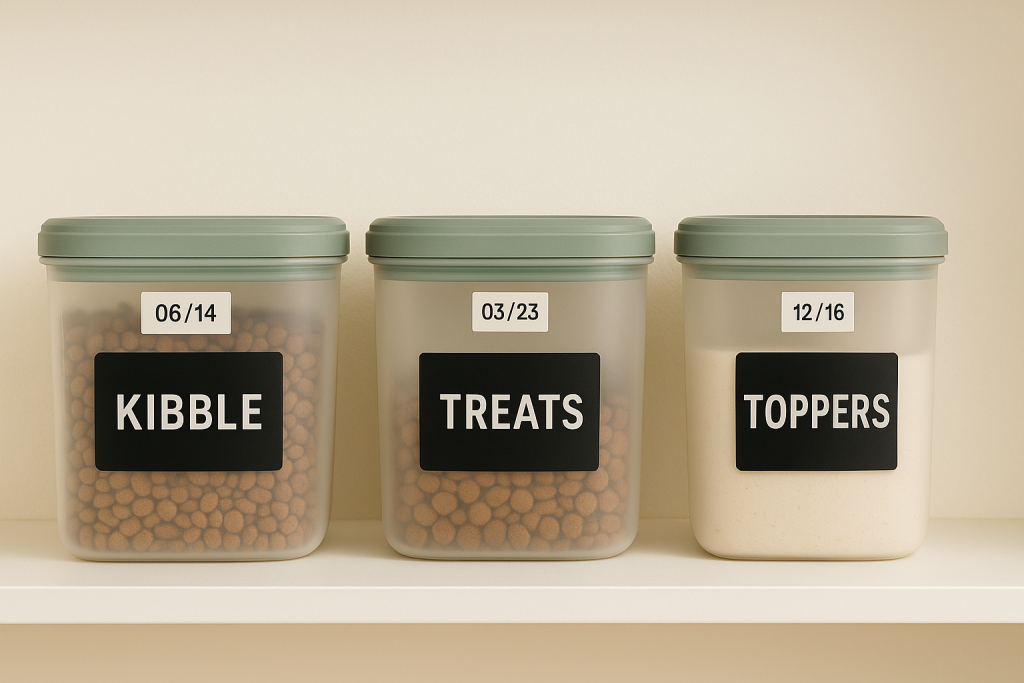
Raw & fresh dog food storage safety
Treat raw dog food like raw meat: keep it cold (≤4°C/40°F), separated from human foods, and clean surfaces and scoops after handling. Portion and freeze extra servings. Higher temps = higher microbial growth, so be strict here.
Freeze-dried and dehydrated dog food storage
These are lower in moisture, but not immune to oxidation. Store in the original resealable bag, push out extra air, keep cool and dark, and use by the “best by” date. Once rehydrated, treat it like wet food and refrigerate leftovers.
Choosing the right dog food storage container
Look for an airtight dog food container with a reliable gasket, smooth interior (easier to clean), and the capacity to hold your bag inside (“bag-in” style). Wheels help for 30–50 lb bags. BPA-free plastics, stainless steel bins, or heavy-duty resin all work—just keep it airtight.
Plastic, stainless, or glass? Materials compared
Plastic (BPA-free): Light, affordable, many sizes; may retain oil odors over time if not cleaned well.
Stainless steel: Durable, smell-resistant, premium look; heavier and pricier.
Glass: Great for treats/small volumes; heavy and breakable for big bags.
Practical tips on measuring, rotating stock, and labeling
- First-in, first-out: finish older bags first.
- Label the open date so you don’t guess later.
- Scoop smart: keep a dedicated scoop in the bin and wash it regularly.
- Seal immediately after each feeding to keep kibble crisp.
Traveling with dog food: portable storage hacks
Use smaller airtight containers or pre-measured zipper pouches inside a rigid bin. For road trips, skip the trunk (often hot) and keep food in the cabin. Collapsible bowls and a tiny measuring cup make life easy.
Common dog food storage mistakes to avoid
- Pouring kibble into an unwashed bin “forever” (rancid residue risk).
- Keeping it near heat or in damp spaces
- Leaving wet food out for hours.
- Tossing the original bag (you lose the lot number). FDA emphasizes keeping packaging details.
🧪 Research-backed insights on dog food storage
- Heat speeds quality loss: A 2025 study examining unsealed dry pet food found that higher storage temperatures accelerated lipid oxidation—aka rancidity—which harms flavor and quality. Keep kibble cool.
- Mycotoxin risk is real: A 2022 analysis of ingredients and commercial pet foods linked certain compositions with higher mycotoxin levels (e.g., aflatoxins). Dry, low-humidity storage lowers risk, along with reputable brands’ quality control.
(If you’re curious: broader reviews show lipid oxidation is a known challenge in low-moisture foods like kibble, reinforcing the value of airtight, cool storage.)
🔹 Top Amazon picks: Best dog food storage containers
Below are solid choices with different sizes and budgets. Pick the capacity that fits your bag so you’re not leaving half a sack out on the floor.
1) simplehuman Large Pet Food Storage Can (30 L / ~32 lb)
Why it stands out: Stainless steel, tight gasket, and a magnetic lid-mounted scoop—sleek and practical.
Features
- Lock-tight handle; airtight silicone gasket
- Removable BPA-free inner bucket; some sizes have wheels
- Brushed stainless finish (fingerprint-resistant)
Pros: Durable, odor-resistant, premium build
Cons: Pricey; heavier than plastic
Best for: Design-focused homes, multi-pet households needing a tight seal
Review snapshot: Buyers praise the sturdy seal and built-in scoop; some note the premium price.
2) Gamma2 Vittles Vault Stackable (up to ~60 lb)
Why it stands out: Legendary Gamma Seal twist lid; rugged, pest-resistant; stackable.
Features
- BPA-free heavy-duty plastic
- Sealed, stackable design in multiple sizes
Pros: Super-tight lid; great for bulk buyers
Cons: Industrial look; requires space for twisting the lid
Best for: Large-breed homes, multi-bag storage
Review snapshot: Consistently praised for airtight performance and durability.
3) IRIS USA WeatherPro Airtight Container with Wheels (up to 54–58 lb)
Why it stands out: Big capacity with wheels for easy moving; budget-friendly.
Features
- Snap-lock latches and foam seal
- Rolling base; various sizes and combos
Pros: Easy to maneuver; good value
Cons: Plastic can retain odors if not washed/dried between refills
Best for: Families who buy 30–50 lb bags
Review snapshot: Loved for mobility and size; occasional notes on latch wear over time.
4) Paw Prints 26-lb Plastic Rolling Pet Food Bin (Wood Grain)
Why it stands out: Compact, gasket-sealed lid for freshness, a 1-cup scoop that locks into the lid, and 4 rolling casters—easy to move and space-savvy.
Features
- Holds up to 26 lb; flat-back sits flush against the wall.
- Docking scoop in the lid for portion control.
Pros: Fresh-keeping gasket + lid-dock scoop
Cons: 26-lb capacity (not for 40–50 lb bags)
Best for: Small-to-medium bags, apartment pantries, and anyone who wants a portable, airtight bin with an integrated scoop.
Review snapshot: Shoppers like the wheels, lock-in scoop, and tight gasket; a few wish for heavier-duty hardware or a larger size.
5) OXO Good Grips Pet POP Container – 6.0 Qt
Why it stands out: Perfect for treats or small-dog kibble; famous OXO button-seal.
Features
- Airtight button-seal lid; includes ½-cup scoop
- Holds up to ~6.5 lb of dog food
Pros: Space-saving; stacks with other POP containers
Cons: Not for big bags; hand-wash lid mechanism
Best for: Apartment living, treat stations, small dogs
Review snapshot: Clear, tidy, and reliable seal; some wish for larger sizes in the “Pet” line.
Comparison table: dog food storage picks
| Model | Key Spec(s) | Warranty | Approx Price/Tier | Best For |
| simplehuman Large Pet Food Can (30 L) | Stainless steel; airtight gasket; magnetic scoop; ~32 lb | Varies by seller/manufacturer | $$$ (premium) | Design-forward homes; odor control |
| Gamma2 Vittles Vault Stackable | BPA-free; Gamma Seal lid; up to ~60 lb | Varies | $$ (mid) | Bulk buyers; pest resistance |
| IRIS USA WeatherPro w/ Wheels | Snap-lock latches; foam seal; wheeled; up to ~54–58 lb | Varies | $–$$ (budget–mid) | Big bags; easy mobility |
| Paw Prints 26-lb Rolling Pet Food Bin (Wood Grain) | Gasket-sealed snap lid; docked 1-cup scoop; 4 casters; flat-back; 26-lb | Varies | $ (budget) | Small–mid bags; rolling convenience; tight spaces. |
| OXO Good Grips Pet POP 6.0 Qt | Button-seal; includes ½-cup scoop; ~6.5 lb | Varies | $ (budget) | Treats and small-dog kibble |
Note: Prices fluctuate; tiers are approximate based on typical retail ranges and build quality.
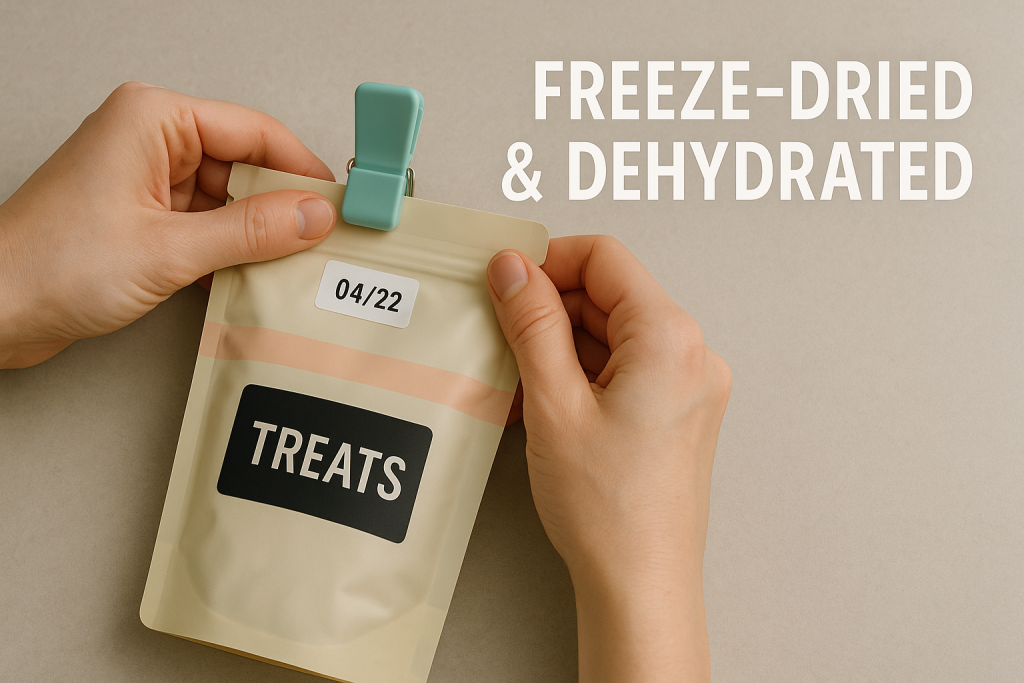
Bonus: cat parents in the house?
Feeding a feline friend too? You might also like our guide to grain-free cat food for balanced context when reading labels and choosing formulas.
FAQs
How long does a bag of dry dog food stay good once unsealed?
Aim to finish opened kibble within 4–6 weeks and keep it sealed between uses. Store cool, dry, and out of sunlight to reduce oxidation. Research shows higher temperatures accelerate quality loss.
Can wet dog food be left in the bowl all day safely?
No. Follow the two-hour rule for perishables (one hour in hot weather). Refrigerate once opened and finish within 3–5 days.
Can I safely use a plastic bin for dog food?
Yes—if it’s airtight and clean. Keep the original bag inside the bin to protect fats and keep the lot number handy. Wash and dry the container between refills. FDA recommends retaining packaging info.
How do I prevent mold and mycotoxins in dog food?
Store food dry, cool, and sealed. Buy bag sizes you can finish within a few weeks. Ingredient composition and poor storage can raise mycotoxin risk; good storage lowers it.
What’s the safest place to store dog food at home?
A cool, dry pantry or an interior closet works well. Avoid the garage, balcony, laundry area, or warm utility rooms—temperature swings and humidity degrade food faster.
Conclusion: a simple dog food storage routine you’ll actually keep
Here’s your easy plan:
- Buy bag sizes you can finish in 4–6 weeks.
- Keep the bag (lot number + liner) inside an airtight container.
- Store cool, dry, dark—under 80°F.
- Scoop, seal, and label the open date.
- Refrigerate opened wet food; follow the two-hour rule.
Do this, and your dog gets fresher flavor, steadier nutrition, and fewer tummy troubles. Most importantly, you’ll feel confident every time you scoop. You’ve got this—and your dog will taste the difference!
